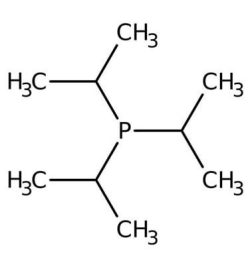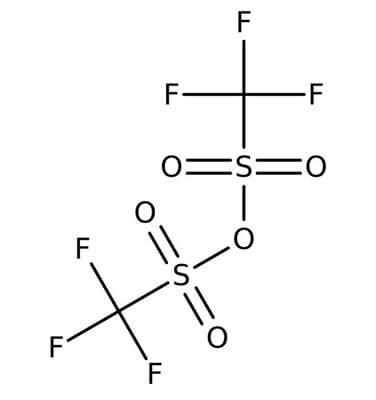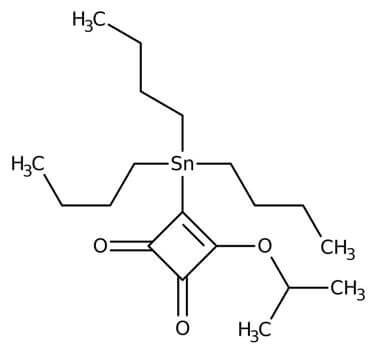Reagents for Synthetic Chemistry
Reagents are essential in chemical synthesis, which transforms building blocks into target molecules quickly, safely, and cleanly. The Thermo Scientific™ Chemicals portfolio, offered through the Fisher Scientific channel, provides over 5,000 products for a wide range of purposes including:
- Organometallics (Grignards, organozinc, organolithium, and organotin compounds)
- Reducing, oxidizing, and halogenating reagents
- The most commonly used functional reagents, plus more unusual reagents for specific reactions
- Industry-leading Thermo Scientific™ AcroSeal™ packaging for air- and moisture-sensitive reagents
All of these products are available in a variety of purity grades and concentrations and convenient pack sizes.

Ligands
The ligand offering features 250 products, including Triphenylphosphine, sulfonic acid sodium salts, Ferrocene, 18-Crown-6, and Thermo Scientific™ Kryptofix™ 222 from product categories like phosphine, Buchwald type, BINAP, NHC, and Josiphos ligands.
Choose Thermo Scientific Chemicals phosphonium hexafluoroborates and tetrafluoroborates, air-stable and safer-to-use alternatives to the pyrophoric trialkyl phosphines. A wide selection of monodentate and bidentate ligands is also available in a range of convenient quantities for your synthetic chemistry needs.

Organic Reagents
The Thermo Scientific Chemicals organic product line features over 1100 reagents and product sub-sets for all types of organic chemistry.
- Halogenation reagents
- Oxidation reagents
- Reduction reagents
The product assortment includes relatively simple molecules (like acetic anhydride), complex molecules (like EDTA), plus reagents that facilitate transformations. Some of the most commonly requested items in this category include tetrabutylammonium hydroxide, trifluoroacetic anhydride, oxalyl chloride, polyvinylsulfuric acid potassium salt, and polypropylene glycol.
Choose high-purity products including Imidazole, phenol, sodium borohydride, and N-bromosuccinimide, or products available in pre-made solutions:
- Glutaraldehyde (25% and 50% in water)
- Sodium biphenyl (in diethylene glycol diethyl ether)
- Trimethylsilyl diazomethane (in hexanes)
- Sodium methoxide (in methanol)
- Borane-tetrahydrofuran complex (in THF)

Organosilanes
Organosilanes are used in organic chemistry for protecting groups to act as intermediates in organic synthesis. Look for commonly used Thermo Scientific Chemicals products like tetramethylsilane, tert-butyldimethylchlorosilane, triisopropylsilane, 3-glycidoxypropyltrimethoxysilane, and N,O-bis(trimethylsilyl)trifluoroacetamide, or products that are used in four of the most important applications:
- Silyl protecting and derivatization reagents 1, 2
- Organosilanes as reducing agents 3
- Silanes in cross-coupling chemistry 4
- Allylsilanes to stabilize α-carbanions and β – carbocations 4
Resources

Organometallics
Organometallics function in organic synthesis as strong bases, as nucleophiles, in metal exchange reactions, and as reducing agents. Reagents including n-butyllithium, diisobutylaluminium hydride, hexamethylditin, titanium(IV) n-butoxide, methylmagnesium bromide, octacarbonyldicobalt, and sodium 1-heptanesulfonate monohydrate are just a few of the Thermo Scientific Chemicals Grignard reagents, organolithiums, organozincs, and lithium amide bases available.
Resources

AcroSeal Packaging
Patented Thermo Scientific AcroSeal packaging protects sensitive organic chemistry solvents and reagents against air and moisture, which can inhibit their ability to perform properly and cause:
- Failed syntheses
- Poor yields
- More byproducts/impurities
- Challenging purifications
In addition, some highly reactive reagents used in organic synthesis can be pyrophoric, toxic, carcinogenic, mutagenic, corrosive, and odorous. AcroSeal packaging provides a safer way to handle these reagents so they can be removed from the bottle under an inert atmosphere and without exposing the contents to air or moisture.
AcroSeal packaging helps to:
- Package the product when it is as dry as possible
- Make it easier to maintain the condition of the product during transfer
- Keep products dry between multiple uses

